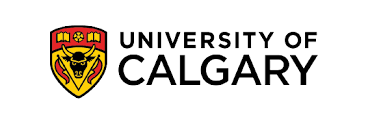University of Calgary: Block Week course explores centuries-old lost art of hand-press bookmaking
If you happened to be strolling through the UCalgary campus on the Monday of Block Week (Aug. 29), you might have come across a puzzling sight on the green space in front of the Administration Building. You might have seen a group of students toiling away amidst pails and laundry vats, hanging sheets of wet paper made from cotton pulp on a clothesline. What sort of scene was this, you may have wondered?
The students were taking part in an experiential learning course through the Department of English called Anatomy of the Book, learning how to make paper as it was made through the 16th to 19th centuries thanks to a mobile papermaking studio, assembled by book historian Maria Zytaruk, associate professor of English.
Photo above: Anisha Bapodra, a student in the Block Week course Anatomy of the Book, works on a rare Vandercook SP15 printing press from the 1960s, recently acquired thanks to a generous donation from the Watson Family Fund.
A trip to the 11th floor of the Social Science building throughout the week would have yielded further unusual sights, with the students fashioning hand-press books using centuries-old techniques for typesetting and illustration.
You also might have seen a few of the students hand cranking a rare Vandercook SP15 printing press dating back to the 1960s. This rare cylinder press was recently acquired thanks to a generous donation from the Watson Family Fund, and it rounds out the Department of English’s impressive vintage printing press collection, which includes a 19th century Washington-style iron hand press.
“The course is rooted in making as a way of knowing,” says Zytaruk. “The students explored the way in which hand-press books were made between 1500 and 1800. They made paper the way it was made in that period. They cut their own Lino blocks to learn how relief printing worked, where you press the paper onto the ink form. They discovered age-old printing and typography know-how by setting the type on a Shakespearean sonnet.
“Think of it as a hands-on approach to the study of the historical hand-press book.”
Freshly made illustrated prints hang to dry in the Department of English’s fledgling Book Arts Lab
Student Sarah Carlson works on a rare Vandercook SP15 Printing Press
Students at work outdoors using a mobile papermaking studio as part of the Block Week course Anatomy of the Book
A Shakespearean sonnet is surrounded by wedges to make it tight for printing on an antique table-top cylinder press, called a Provisional Press
Sarah Carlson, a student in the class, was thankful for the experiential learning opportunity. “I loved getting a chance to work hands-on with the materials we were discussing,” she says.
“It helped me to better understand the labour and care that went into early bookmaking. It was fun doing so through activities that broadened our learning, beyond just reading about it, or watching a video of someone else doing the work.”
Student Haley Wells agrees “The class was amazing,” she says. “It brought history and literature to life in ways that reading a textbook alone never could.” Wells adds that the hands-on classwork required a lot of collaboration with her fellow students, which she found rewarding.
“We had to work together to do anything effectively and it created a bond between the students. The community that this course established was utterly unique and something that other classes should aspire to attain.”
Vandercook press is safe and student friendly
Further enhancing the students’ experience was the use of the newly acquired Vandercook SP15 printing press in the class. “Because the Vandercook is a cylinder press that’s hand cranked, it’s very safe and student friendly,” Zytaruk says. “The idea was that the students could set their own type and carve their own blocks of images which could then be printed using that Vandercook press. They found it really exciting.”
Vandercook printing presses dominated the proof press industry in the 20th century because they did not rely on gravity for the force of their ink impression on the page. As a geared cylinder press, it was easier and more precise for operators to use.
In fact, the SP in the Vandercook SP15 model stands for simple precision. This allowed for greater speed when it came to inking and feeding paper into the press.
Zytaruk says that the English department’s impressive press collection would not have been complete without a Vandercook and she’s grateful to the generous donor who enabled the acquisition.
With this consolidation of the press collection, Zytaruk hopes to expand the English department’s printing press room into a Book Arts Lab. This fledgling lab has also recently received a major gift-in-kind donation of historical bookbinding equipment from the Calgary chapter of the Canadian Bookbinders and Book Arts Guild.
Says Zytaruk: “I’m interested in developing a fuller range for the students where they can gain experience in making paper, printing, illustration, and book binding.”

